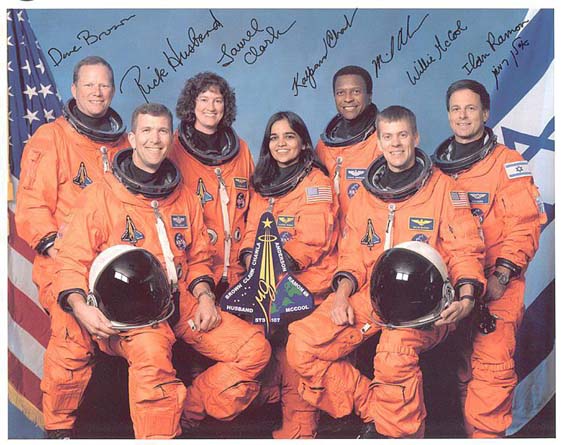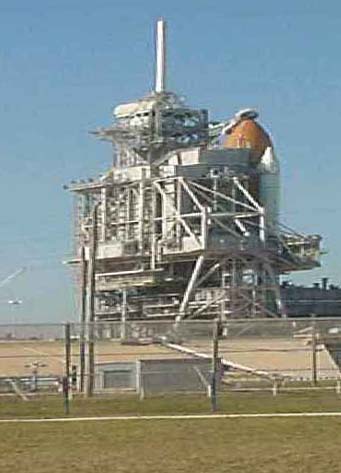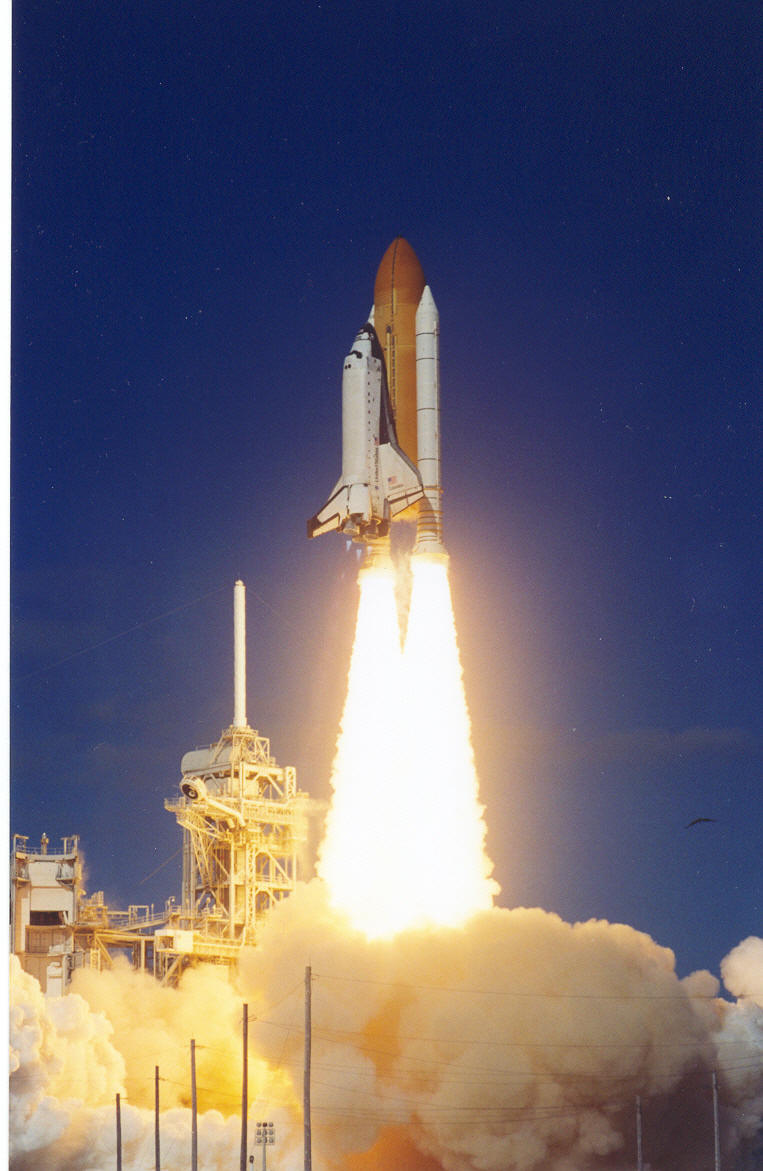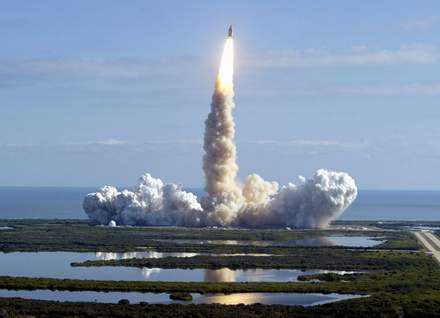|
|
||||||||||||||
|
Comancheites A Little Lift Can Reach Great Heights by Omri Talmon |
|
|
NASA Photo
Episode #1 About 31 years ago at my home in Israel, the kid from downstairs, a high school senior, came up and knocked on my door. "Omri, I was invited to participate in the air force screening tests and was successful, so they proposed to me to sign up. However, I never flew. Can you give me a ride?" I agreed. It was during my pre-Comanche days so I took the Aeroclub's Cessna 172 rather than my low wing Cherokee and we flew a low level contact navigation trip over the desert. It was really nice. Leaving the aircraft he said, "I made up my mind. I will join the air force". Episode #2 It is January 16th, 2003, 09:45. Having flown there from Tel Aviv just two days before, I am sitting on a bench in Florida, among some 250 people at a place called Banana Creek Viewing Site, Kennedy Space Center (KSC). Loudspeakers relay to us the communications between Houston, the KSC control room and the cockpit of a modern-time "Tower of Babylon" which is now on launch pad 31A, just three miles away from us. A large panel shows the countdown numbers and a TV screen displays what the NASA cameras see. Astronaut Julie Payette, a Canadian, is at hand to comment and explain, together with three other astronauts available for one-on-one questions and answers. I am a NASA guest for the launch of the space shuttle Columbia--mission known as STS 107. The day before, we had a briefing by Julie who explained in detail what is going to happen, and then we were driven around and came as close to the launch pad as is allowed. Julie is willing to answer any question and is full of humor and great spirit. When I talk to her we speak French, as she is from Quebec. She says her husband, a pilot, is a slow flyer, not more than Mach 3, while she proudly wears a Mach 25 badge on her official blue astronaut uniform.
When the countdown clock reaches 20:00 minutes it stops. We know from Julie that this is a scheduled, routine stop for system checkout. A second one will be done at 9:00 minutes. We hear the different persons at their control posts announcing one by one, "all go", and the countdown resumes. At 4:30 minutes we rise to our feet for the "The Star Spangled Banner". At 4:00 minutes the last six persons at the pad rush to a car and drive away at full speed. The countdown, which was never stopped on this mission save for the two routine stops mentioned above, continues. The group is completely silent, and the gentleman on my right tries to hide his nervousness. At minus seven seconds, "We have ignition of the main engines." As we learned, these engines, which can be controlled and shut down, are fired to make sure they all operate properly while there is still time to abort if there is trouble. At minus one second the huge solid fuel rocket boosters are ignited and clouds of smoke start to expand horizontally. Zero. "liftoff" says the loudspeaker.
Indeed, we can see that the "Tower of Babylon" starts to move, as pushed up by a shining fire finger. There are cheers among the group, but otherwise – silence. The lady behind me says: "I was told it is very noisy". The "Tower" accelerates (we know that at this stage the acceleration is 1g) and the fire "finger", three to four times the length of the propelled vehicle (which is about 200 feet long) leaves ground as well. Then, about 15 seconds after rocket ignition, the noise hits us: an unbelievable roar with explosions here and there. The vehicle continues to accelerate majestically, leaving behind clouds of smoke, then tilts to the east. The engine roar is such that one cannot distinguish the supersonic booms.
The two launch pads are seen on the horizon, the active one for this launch on the right At plus 2:05 minutes the boosters are jettisoned. Even though at this time the vehicle is about 43 miles down range and at an altitude of 35 miles (traveling at 3,200 mph) we notice the small explosions which cut the orbiter loose from the rockets. Now, the main engines are brought to full power; the acceleration goes to 3g and stays there, the fireball gets smaller and smaller, but on this crystal clear day it can still be observed up to about 150 miles. The loudspeaker keeps announcing altitudes, speeds, and distances down range, until at 8:15 minutes it says MECO (Main Engine Cutoff ), altitude 148 miles, speed 17,000 mph. The space shuttle (known here as the orbiter) is now in orbit. The gentleman on my right emits a sigh of relief. I turn and hug him, and we start to make our way toward the bus. The launch is over. Question: Is there any relationship between Episodes #1 and #2? Answer: Yes, there is. That kid from downstairs who knocked on my door 31 years ago is one of the seven crew members (five men, two women) who sit up there in the cockpit of Columbia, on top of one million parts, each supplied by the lowest bidder. He is Ilan Ramon, now Colonel, Israeli Air Force. The gentleman on my right is his father. The group we were part of is composed of the people invited by the STS 107 crew. Each crewmember has the right to invite some family and friends, and Ilan, remembering his first flight ever, included me.
Footnotes: For a bio and photo of Ilan Ramon check: www.jsc.nasa.gov/bios/PS/ramon.html For a bio and photo of Julie Payette check: www.jsc.nasa.gov/bios/htmlbios/payette.html
Omri Talmon, born 1936, lives in Tel Aviv, Israel. He holds degrees in engineering, business administration and accounting. Presently a consultant, he worked for many years as an executive for several Hi-Tech companies. Omri is a private pilot with both Israeli and U.S. certificates. His ratings include SEL, MEL, Instrument, Glider, and CFI (glider). Since 1974 he owns and flies a 1966 PA-30-B, registration 4X-CAO. |
|
|






